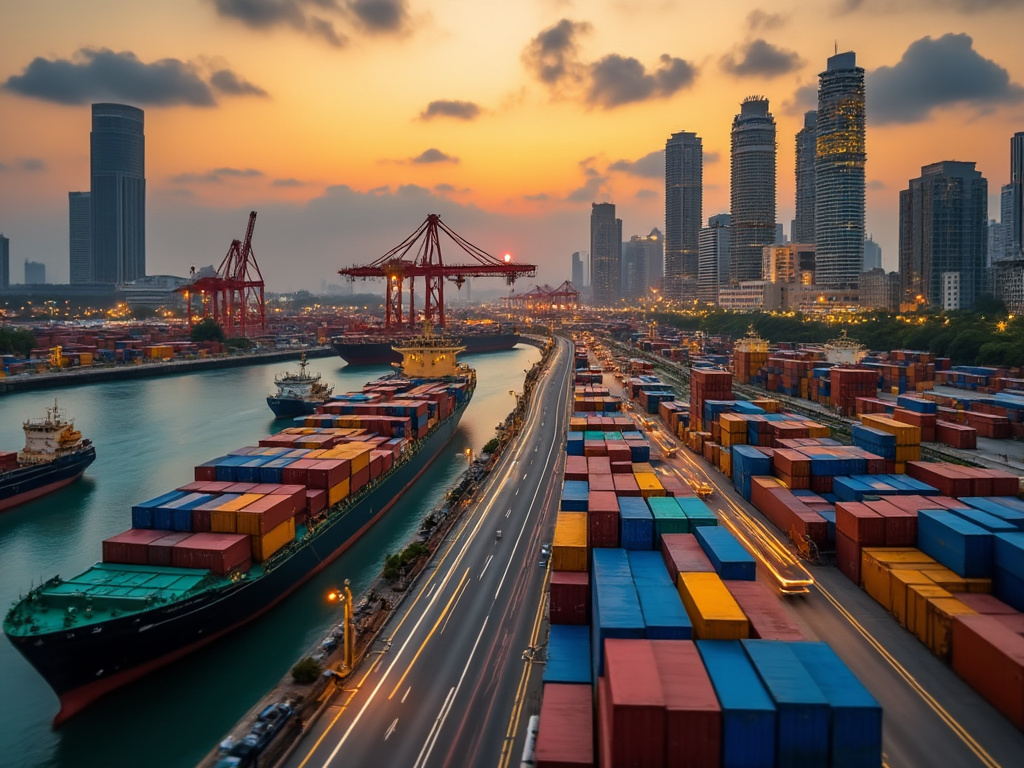
New tariffs imposed by the U.S. result in an average levy of 30% on exports from Asia, prompting fears of retaliation and increased inflation.
Asia has been notably affected by new tariffs implemented by the United States, leading to an average tariff rate of nearly 30% on exports from the region to the U.S. Following the announcement of these tariffs by President Donald Trump, experts have warned that the decision could trigger a global trade war, as countries may respond with their own protective measures, thereby increasing inflationary pressures in various economies.
The baseline tariff set by the U.S. on most imports is 10%, but this rate increases significantly for certain Asian countries, particularly those with larger trade surpluses with the U.S. An ANZ report indicates that these disproportionately high tariffs lead to an average rate of 29.8% for Asian countries, excluding Singapore.
China has emerged as the most significantly impacted nation, facing cumulative import tariffs amounting to 54%.
Other Southeast Asian nations such as Cambodia and Vietnam are also experiencing severe tariff impacts, with rates of 49% and 46%, respectively.
Conversely, the Philippines has one of the lower tariff rates at 17%.
Singapore's exporters will be subjected to a baseline tariff of 10%, while India will face a rate of 26%.
In response to the announcement of these tariffs, stock markets across the Asia-Pacific declined sharply.
This downturn included indices such as Japan's Nikkei 225 and Hong Kong's Hang Seng, reflecting the concern surrounding exports to the U.S., which account for approximately 15% of total Asian exports.
President Trump referred to the day of the tariffs' announcement as “Liberation Day,” claiming that the tariffs are intended to reclaim financial resources for the U.S. economy.
The imposition of reciprocal tariffs aims to counterbalance the higher import duties that other countries typically impose on American goods.
The baseline tariff set by the U.S. on most imports is 10%, but this rate increases significantly for certain Asian countries, particularly those with larger trade surpluses with the U.S. An ANZ report indicates that these disproportionately high tariffs lead to an average rate of 29.8% for Asian countries, excluding Singapore.
China has emerged as the most significantly impacted nation, facing cumulative import tariffs amounting to 54%.
Other Southeast Asian nations such as Cambodia and Vietnam are also experiencing severe tariff impacts, with rates of 49% and 46%, respectively.
Conversely, the Philippines has one of the lower tariff rates at 17%.
Singapore's exporters will be subjected to a baseline tariff of 10%, while India will face a rate of 26%.
In response to the announcement of these tariffs, stock markets across the Asia-Pacific declined sharply.
This downturn included indices such as Japan's Nikkei 225 and Hong Kong's Hang Seng, reflecting the concern surrounding exports to the U.S., which account for approximately 15% of total Asian exports.
President Trump referred to the day of the tariffs' announcement as “Liberation Day,” claiming that the tariffs are intended to reclaim financial resources for the U.S. economy.
The imposition of reciprocal tariffs aims to counterbalance the higher import duties that other countries typically impose on American goods.





























